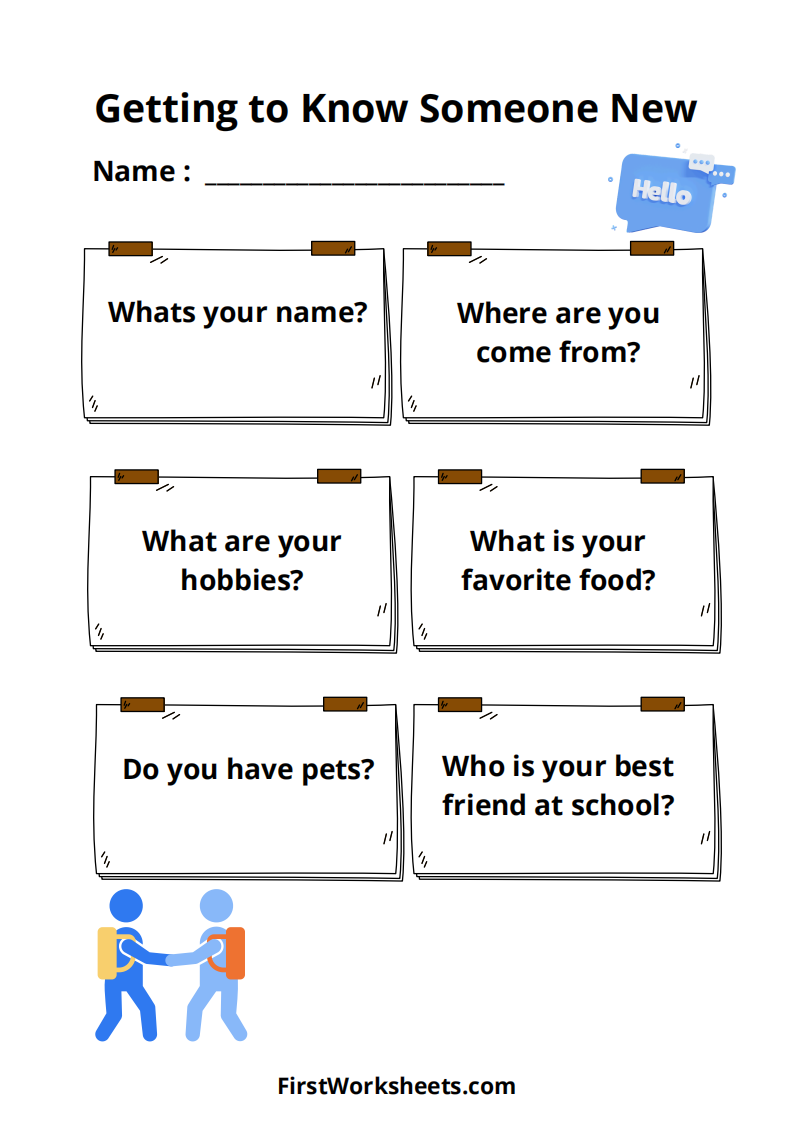Getting to Know You Worksheets
Getting to know your students is a critical aspect of teaching, especially in the early stages of the school year. One of the most effective tools teachers can use to facilitate this process is the “Getting to Know You” worksheet. These worksheets serve as an excellent way for educators to gather valuable information about their students, helping to build a positive classroom environment and fostering a sense of community. In this article, we will explore the various aspects of “Getting to Know You” worksheets, their benefits, types, and how to effectively implement them in a classroom setting.
The Importance of “Getting to Know You” Worksheets
- Building Relationships:
- These worksheets help teachers learn about their students’ interests, hobbies, strengths, and areas where they might need additional support. This information is crucial for building strong, positive relationships.
- Understanding students on a personal level allows teachers to tailor their teaching methods to better suit the needs of the class.
- Promoting Inclusivity:
- They encourage students to share aspects of their identity, culture, and background, fostering an inclusive classroom where diversity is celebrated.
- By sharing personal information in a safe environment, students feel valued and respected, leading to a more cohesive and supportive classroom dynamic.
- Enhancing Communication:
- These worksheets open up lines of communication between students and teachers, allowing students to express their thoughts, feelings, and concerns more openly.
- Teachers can identify any potential issues early on, such as shyness or anxiety, and address them proactively.
Types of “Getting to Know You” Worksheets
“Getting to Know You” worksheets come in various formats, each serving a different purpose. Below are some common types:
- Basic Information Sheets:
- These worksheets typically include fields for students to fill out basic information such as their name, age, favorite color, and hobbies. They provide a quick snapshot of each student.
- Interest Inventories:
- These are more detailed worksheets that explore students’ interests in different areas, such as subjects they enjoy, books they like to read, or extracurricular activities they participate in. They help teachers understand what motivates their students.
- Personality and Learning Style Surveys:
- These worksheets delve into students’ personalities and learning preferences. Questions may include whether the student prefers group work or individual tasks, how they like to receive feedback, or what their favorite type of project is. This information is invaluable for differentiated instruction.
- Goal Setting Worksheets:
- These sheets encourage students to think about their goals for the school year, both academic and personal. They help students take ownership of their learning and provide teachers with insights into their students’ aspirations.
- Family and Cultural Background Surveys:
- These worksheets focus on students’ family structures, cultural backgrounds, and traditions. Understanding these aspects of a student’s life can help teachers create a more culturally responsive classroom.
How to Effectively Implement “Getting to Know You” Worksheets
- Timing and Environment:
- Introduce these worksheets during the first week of school when students are getting to know each other and their teacher. This timing helps set a tone of openness and trust.
- Create a comfortable environment where students feel safe sharing personal information. Make it clear that the information will be used to help them succeed and feel comfortable in class.
- Discussion and Reflection:
- After students complete their worksheets, engage them in a discussion or reflection activity. This could involve sharing answers in pairs or small groups, or creating a classroom display that highlights common interests and unique traits.
- Reflection helps students process what they’ve shared and learn more about their classmates, further fostering a sense of community.
- Ongoing Use:
- Use the information gathered from these worksheets throughout the school year. For example, refer back to them when planning lessons or activities to ensure they align with students’ interests and learning styles.
- Update the worksheets periodically, as students’ interests and goals may change over time.
- Privacy Considerations:
- Be mindful of the sensitive nature of some of the information shared. Ensure that students know their responses will be kept confidential unless they agree to share certain details with the class.
- Incorporating Technology:
- In today’s digital age, consider using online forms or surveys to collect this information. This approach can be more engaging for tech-savvy students and allows for easy organization and analysis of the data.
“Getting to Know You” worksheets are a simple yet powerful tool for educators to connect with their students on a personal level. By gathering and using this information effectively, teachers can create a classroom environment that is inclusive, supportive, and tailored to the unique needs and interests of each student. Whether used in their traditional paper form or through digital platforms, these worksheets play a crucial role in setting the stage for a successful and engaging school year.





